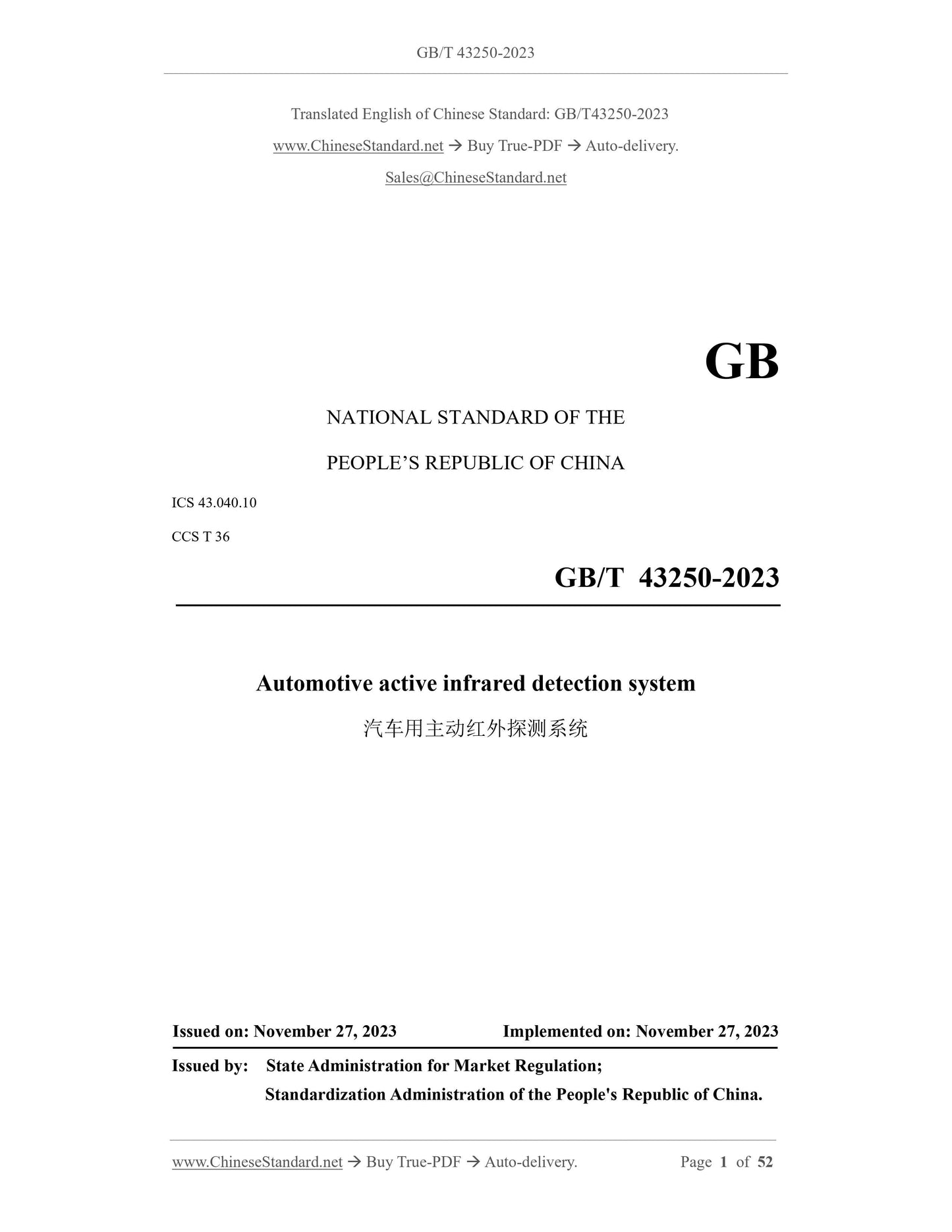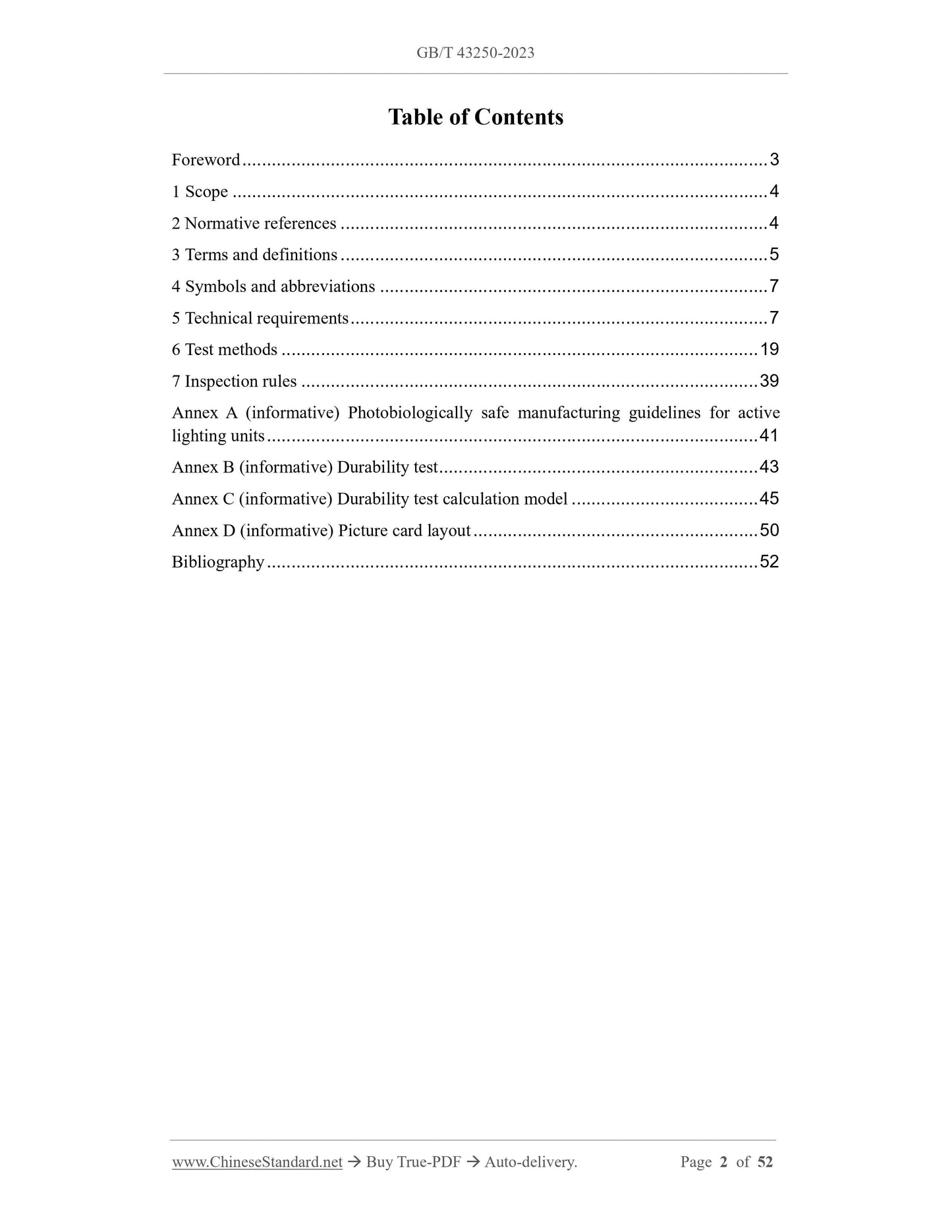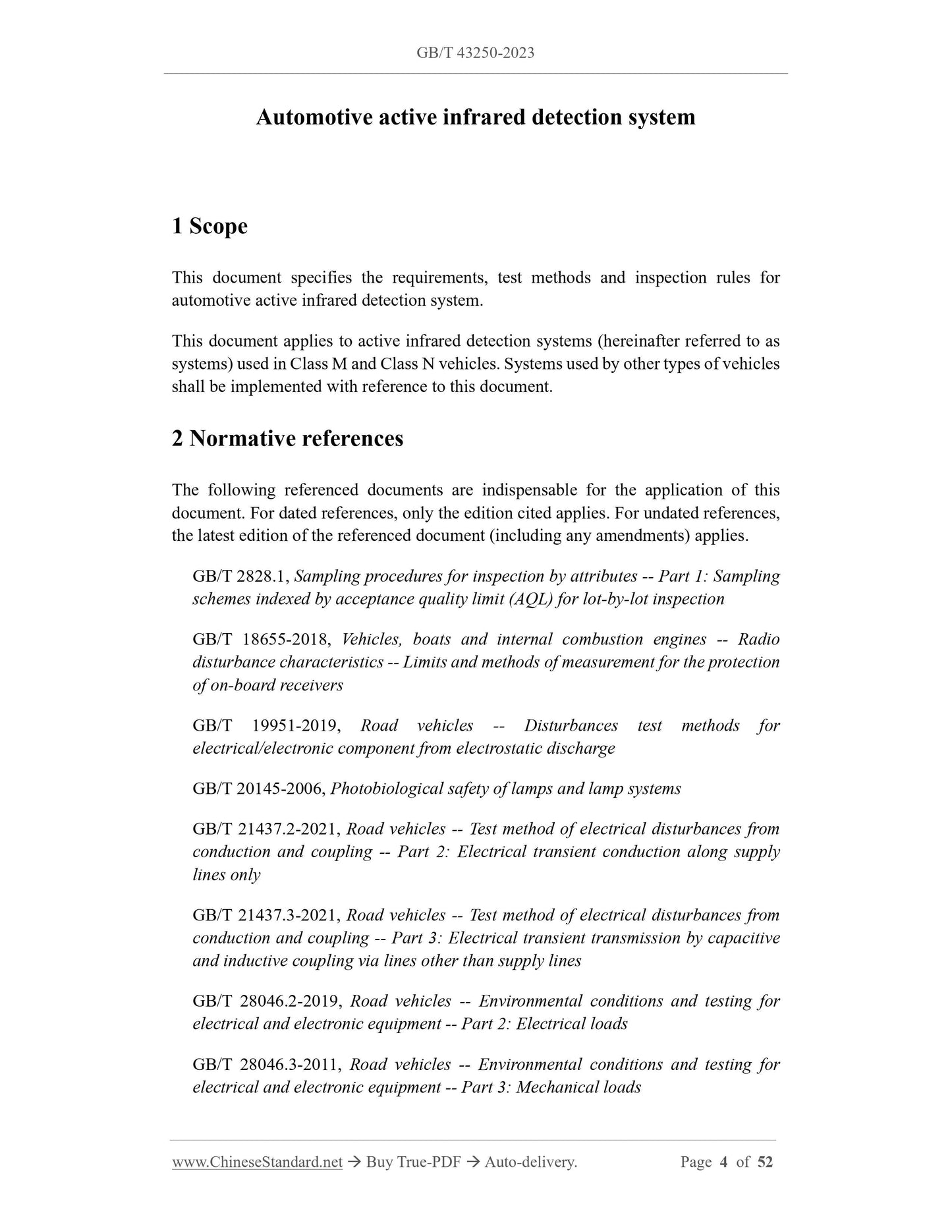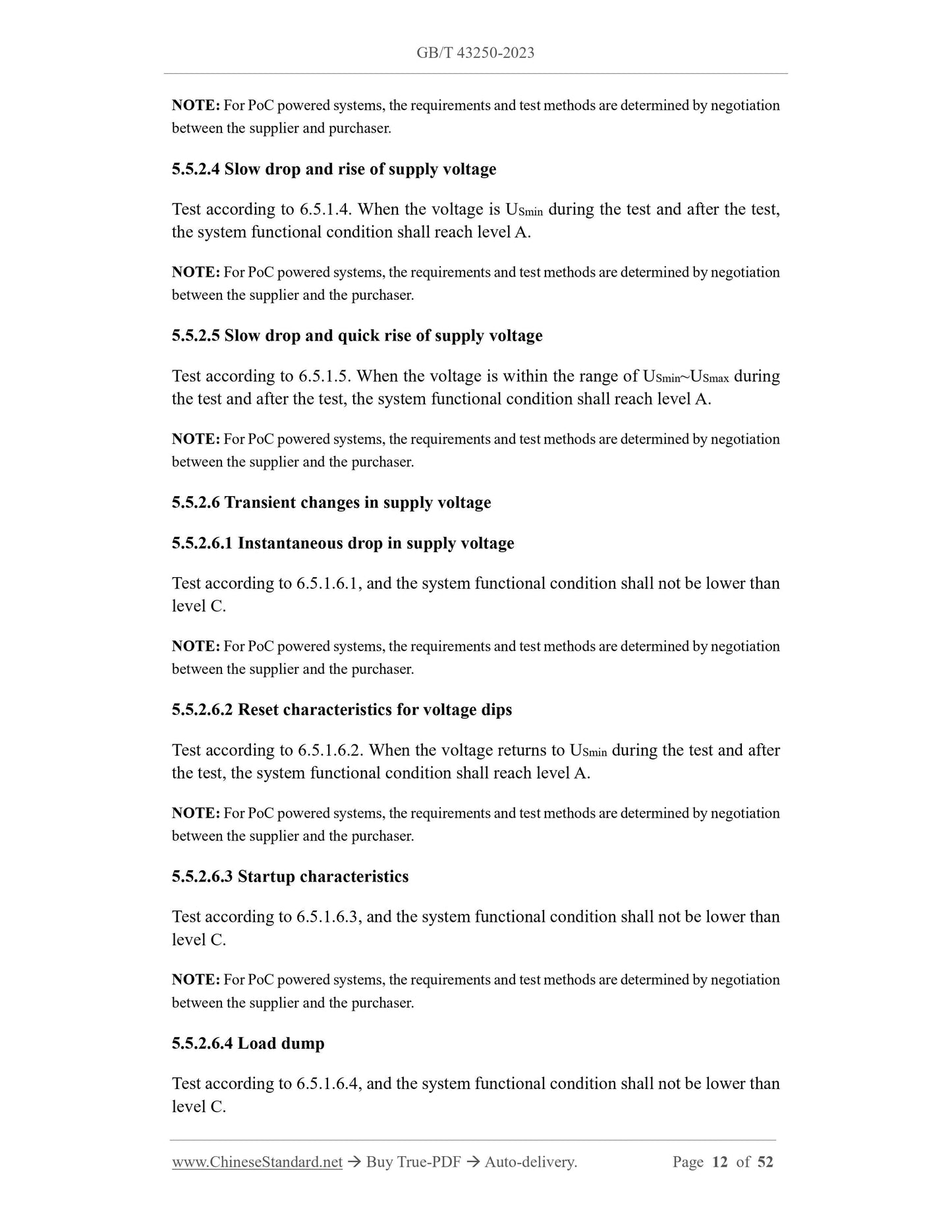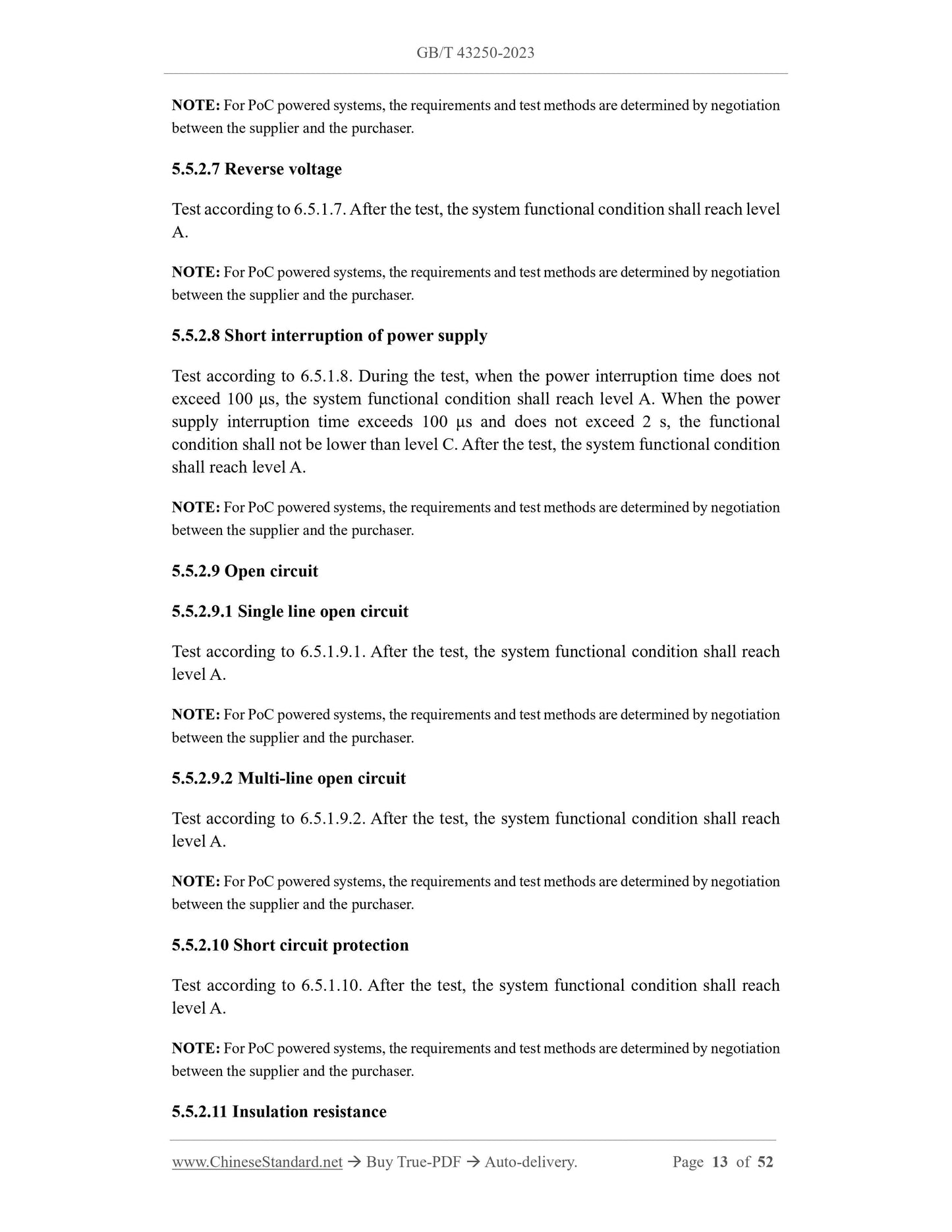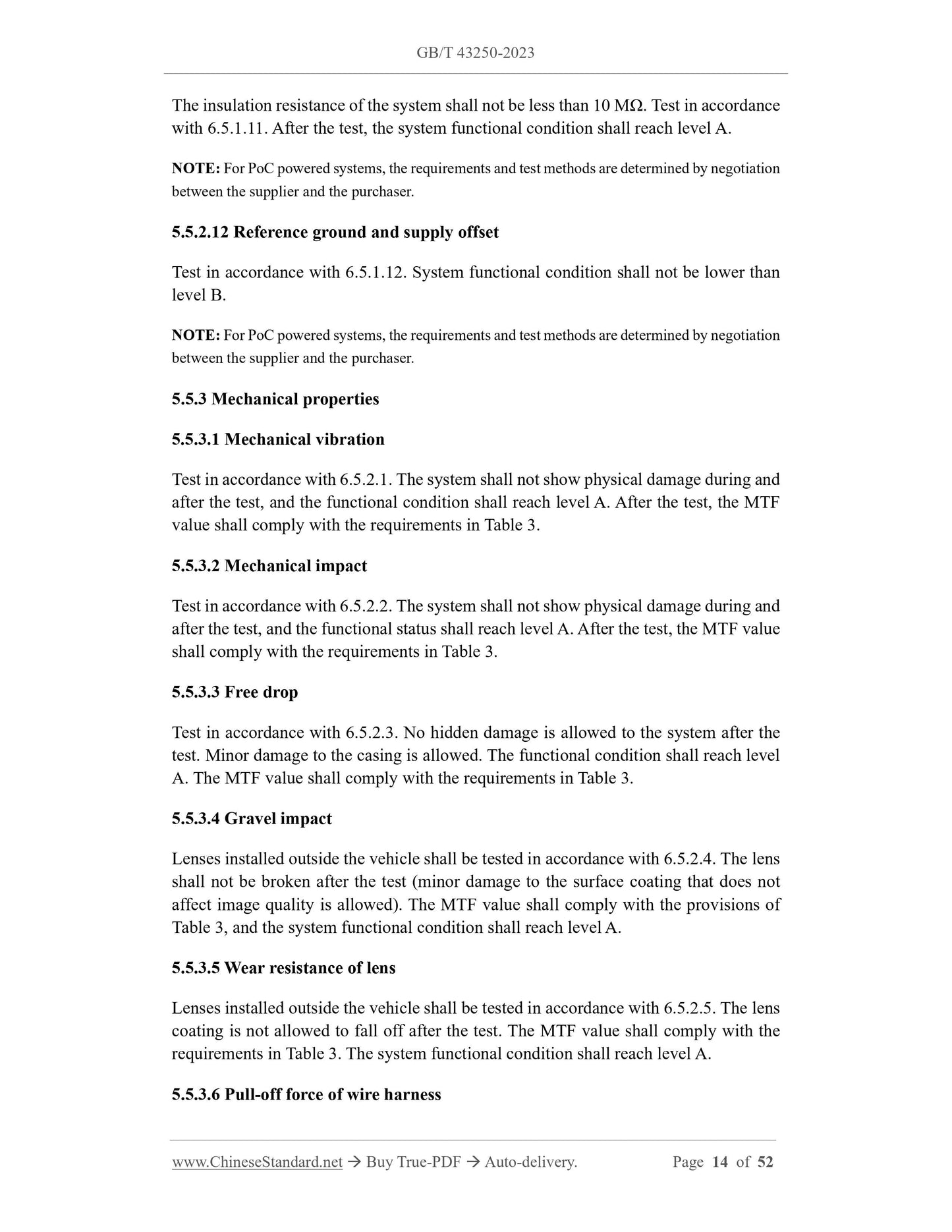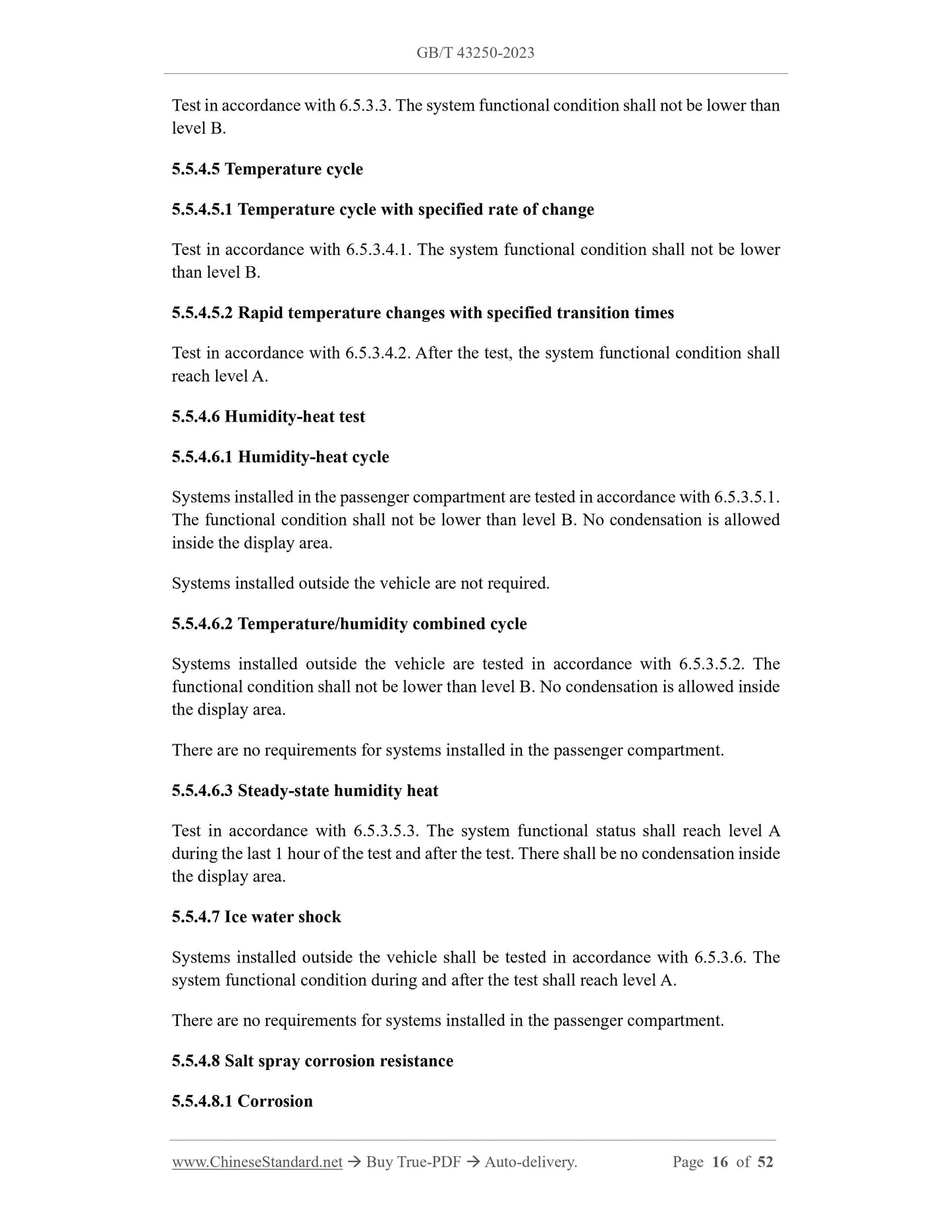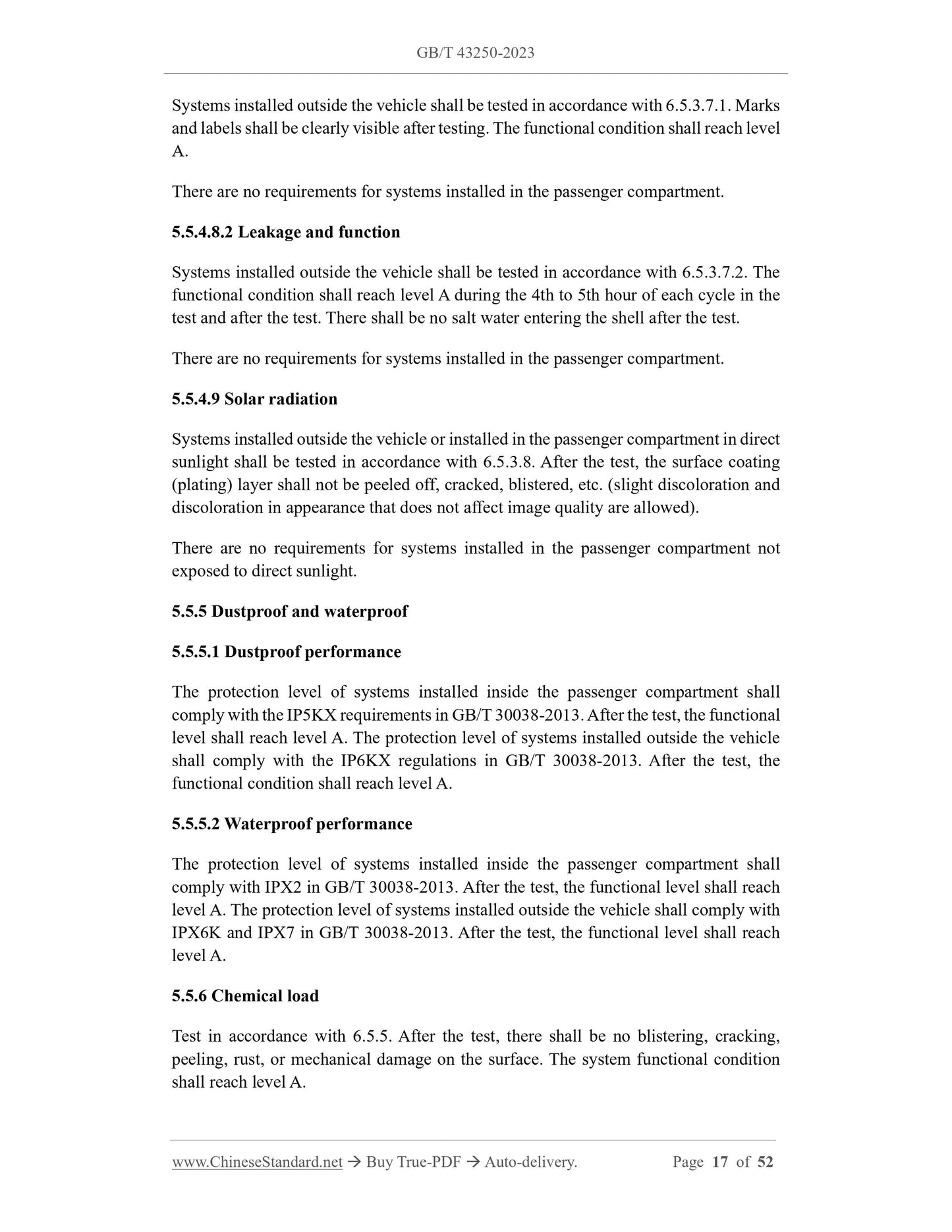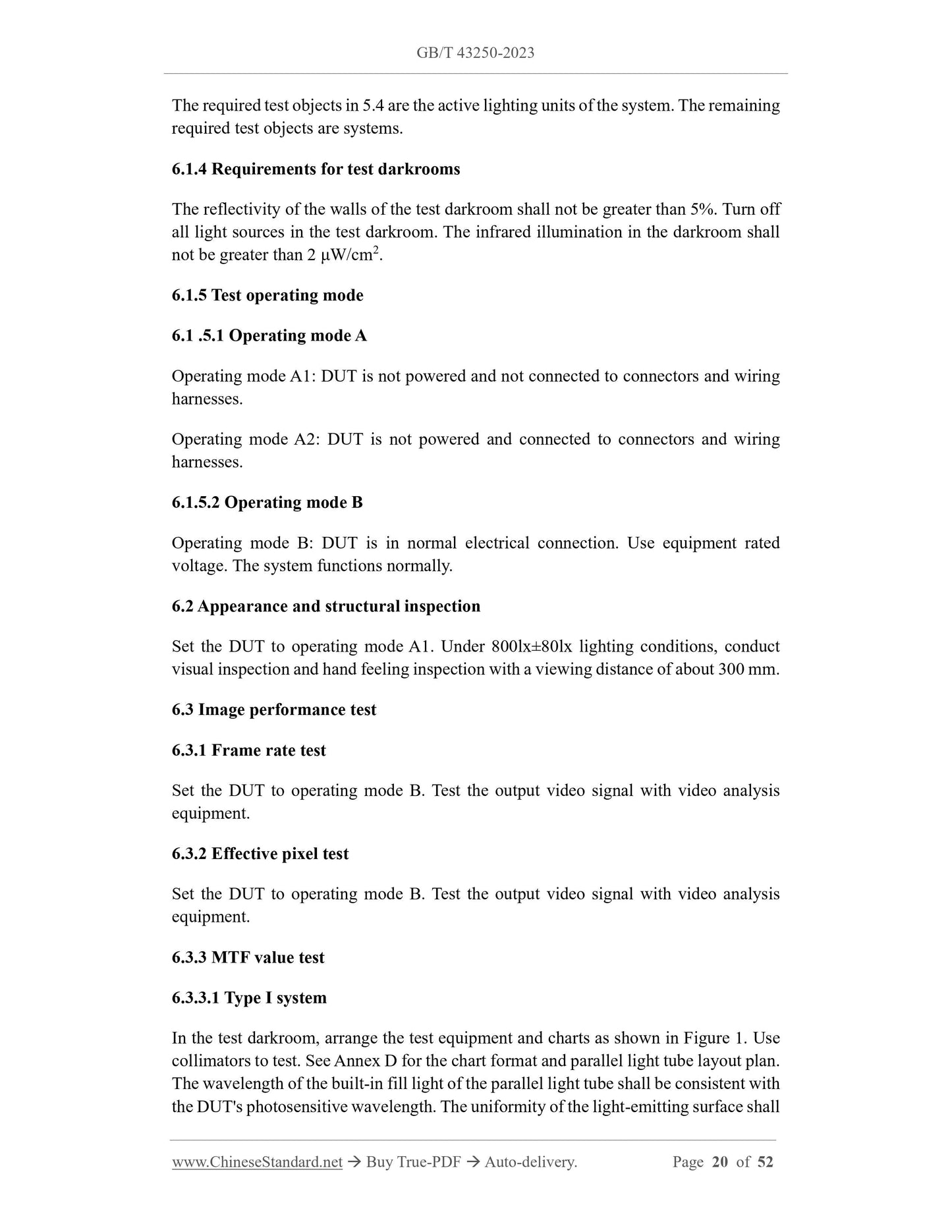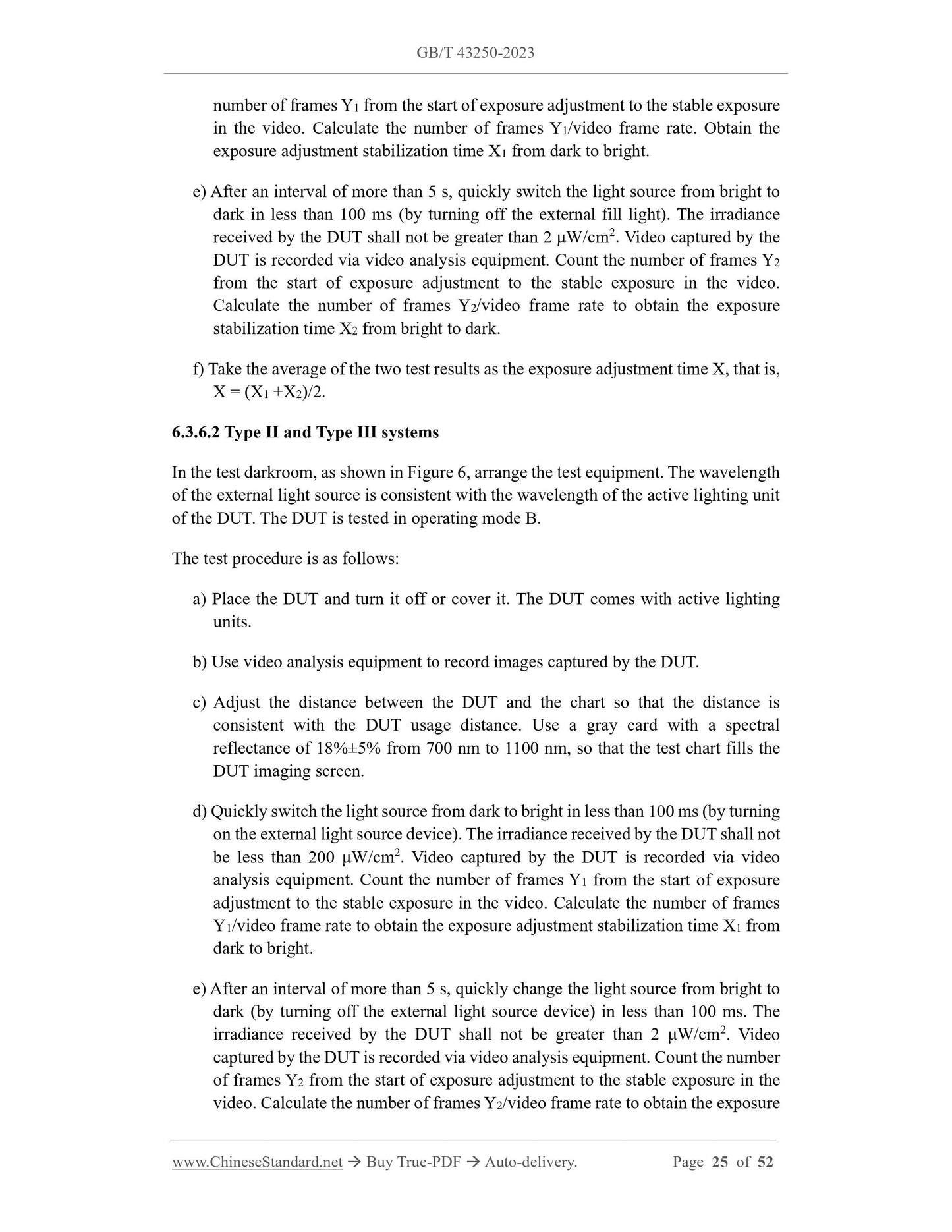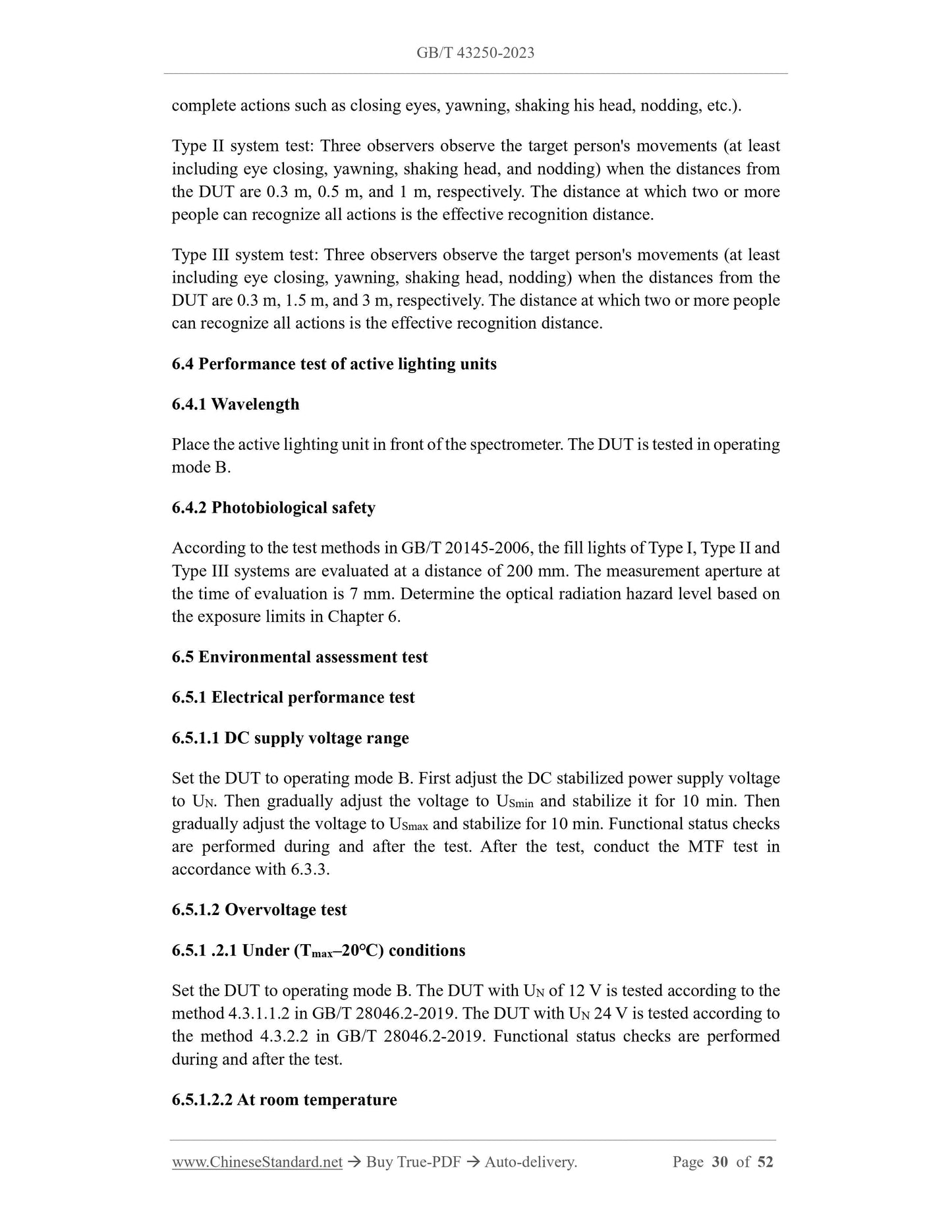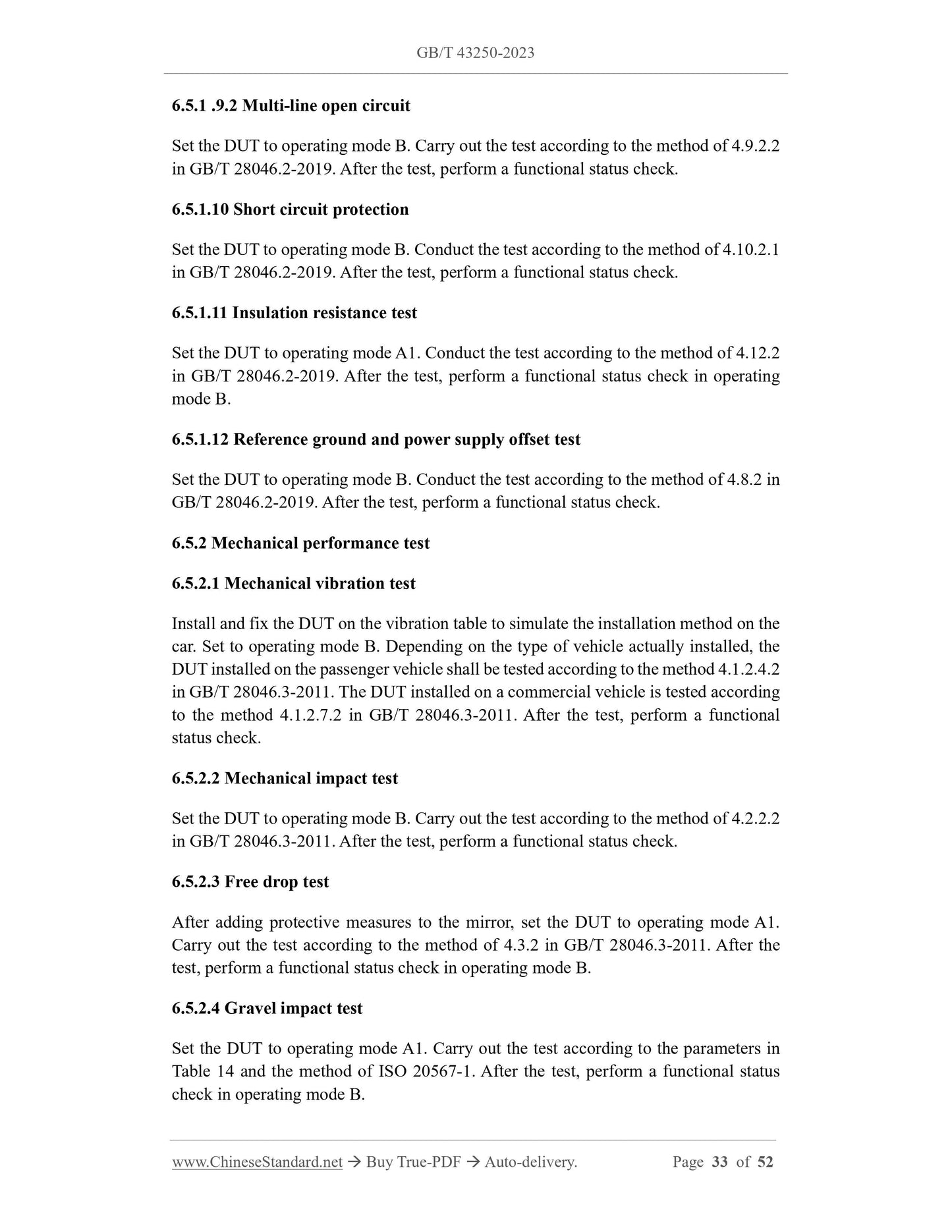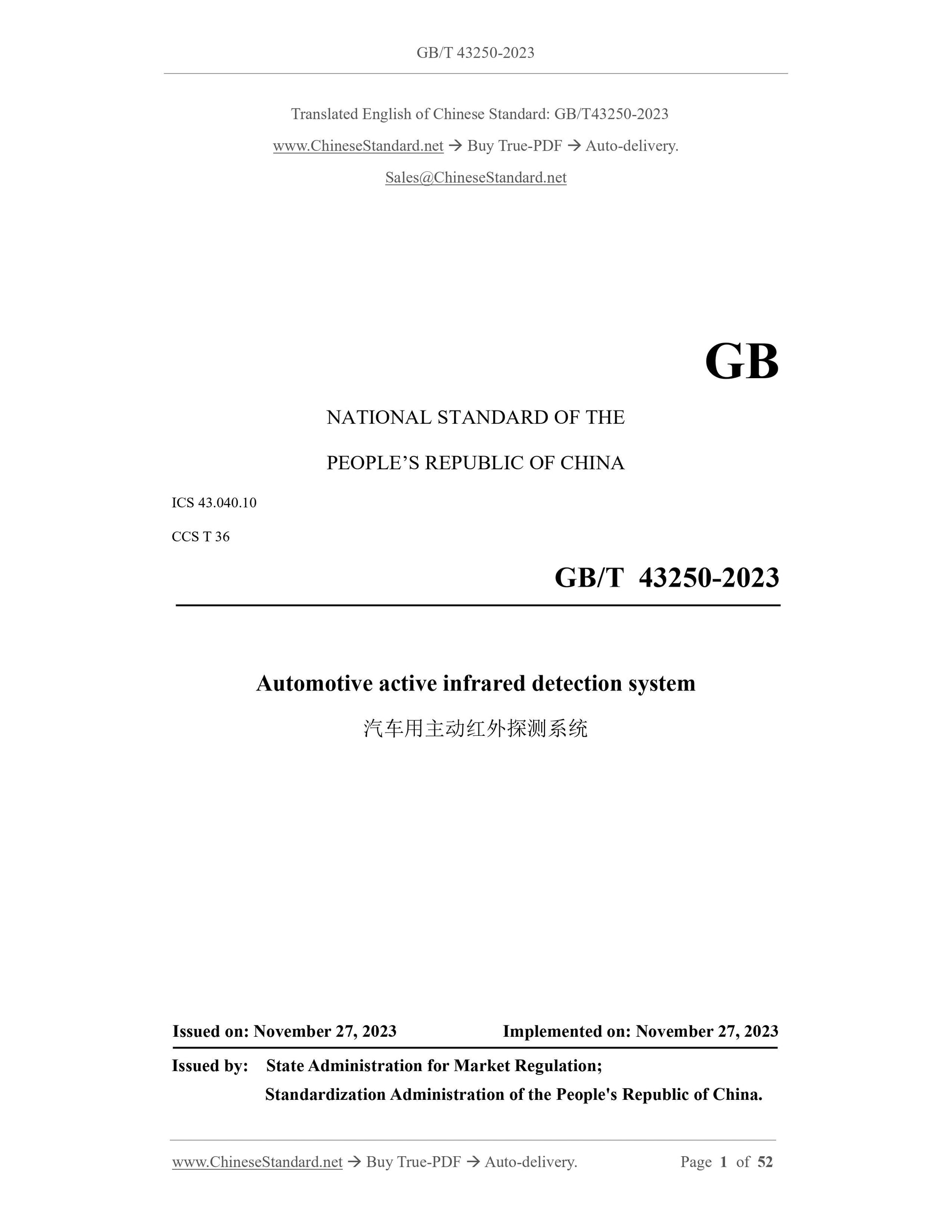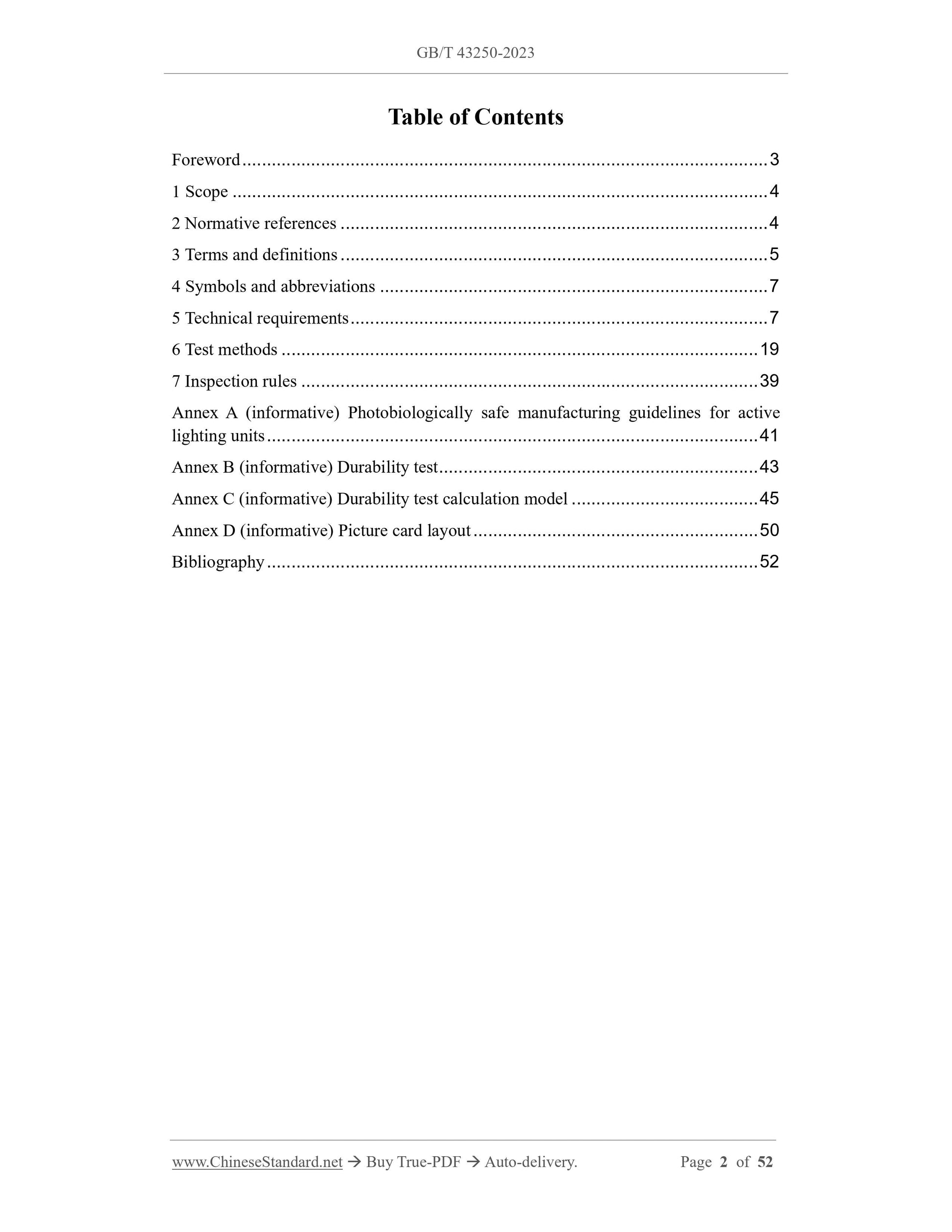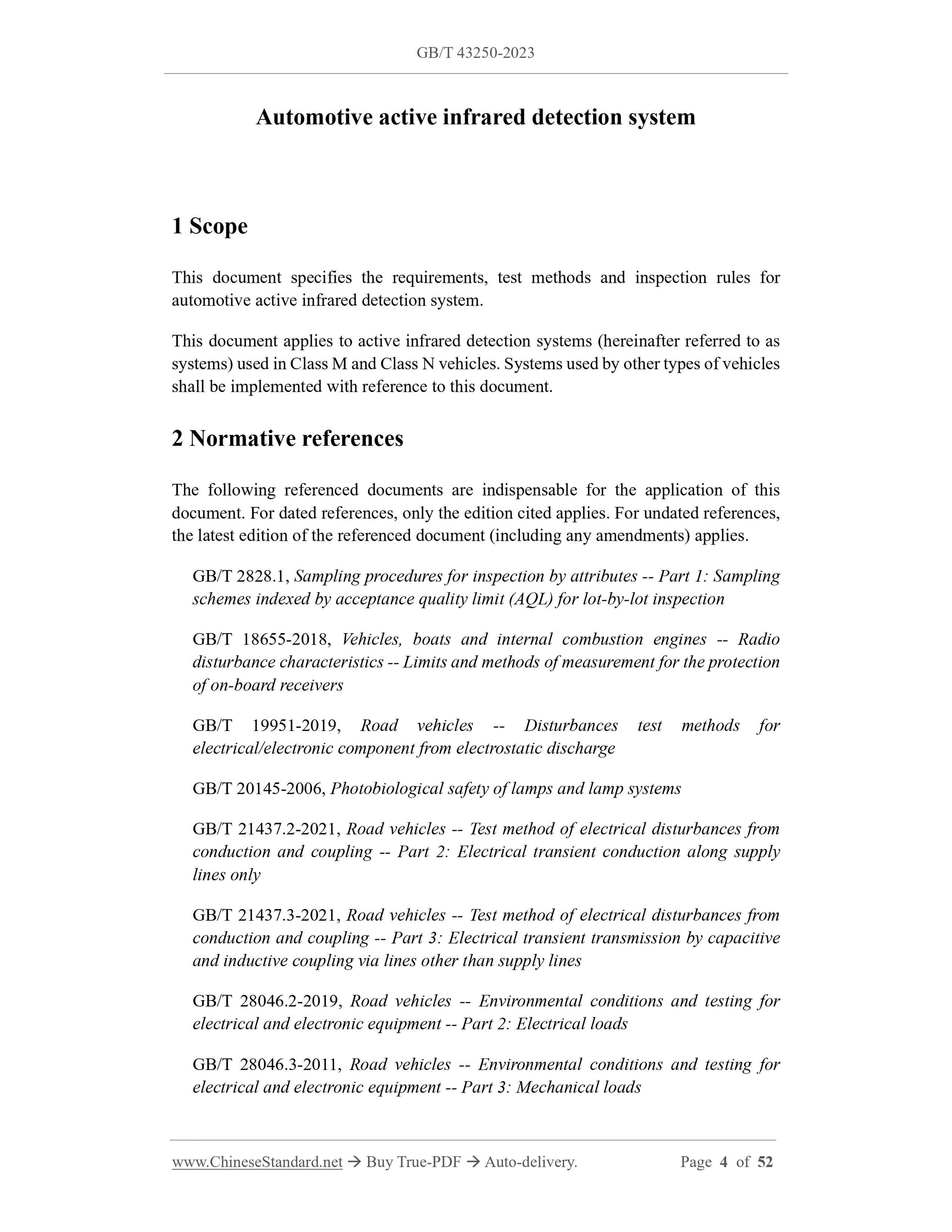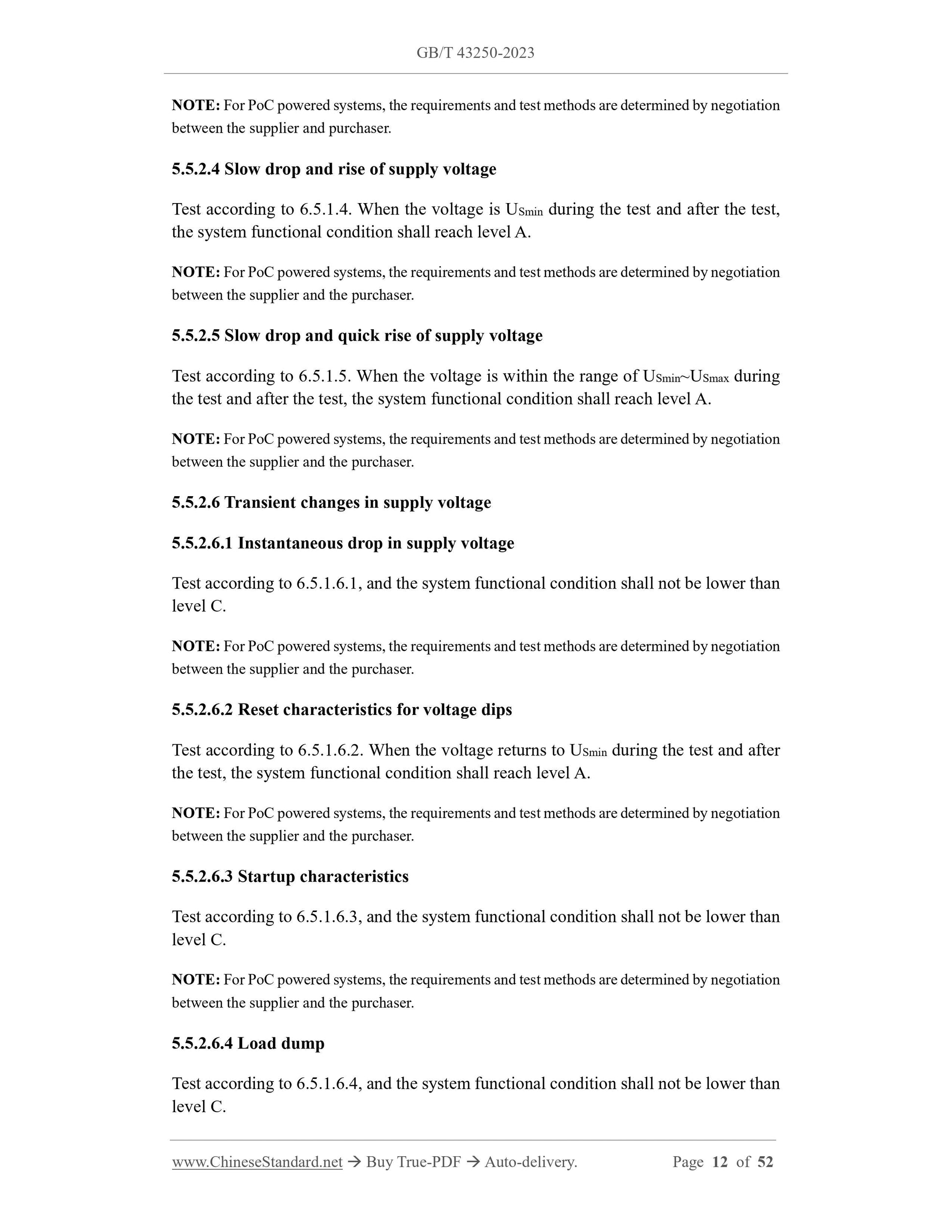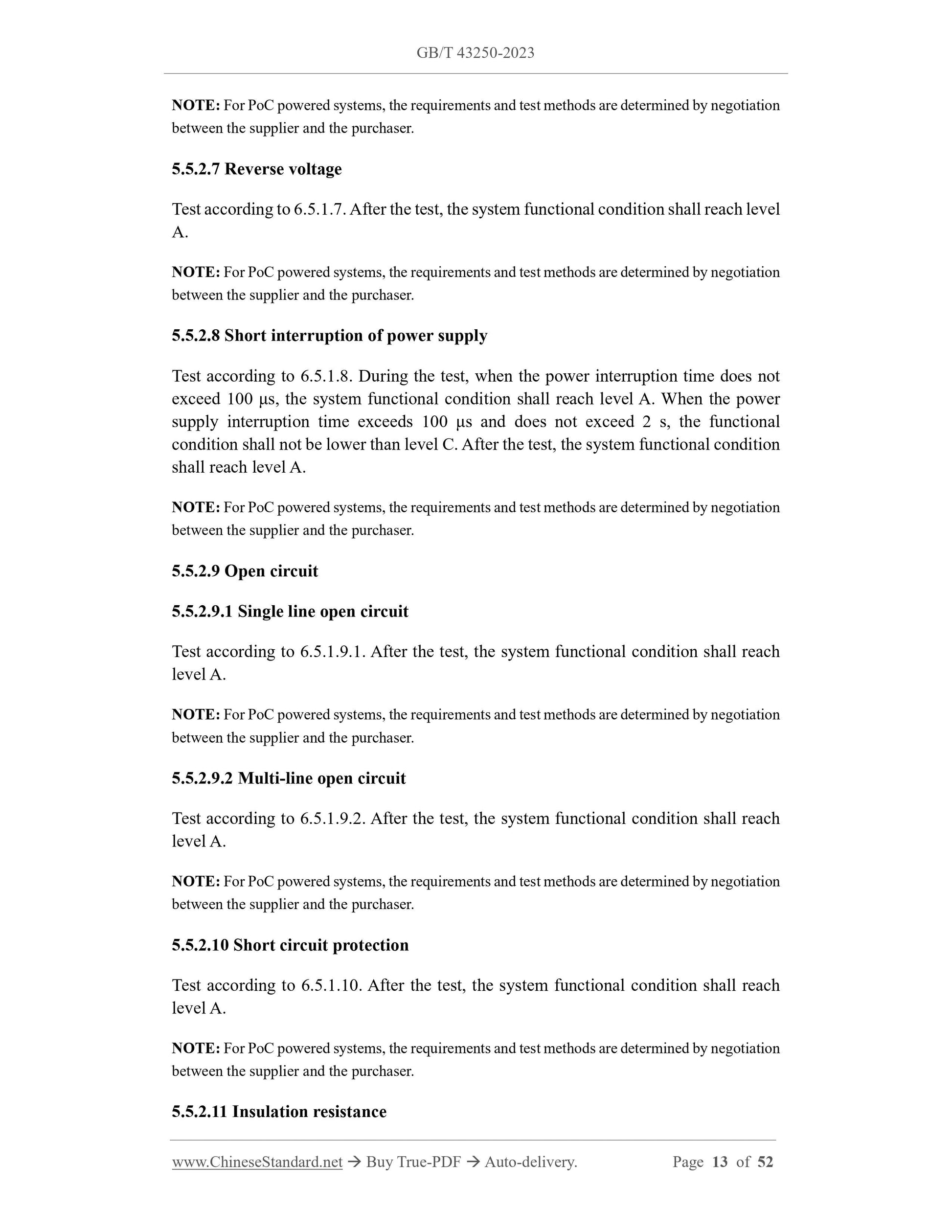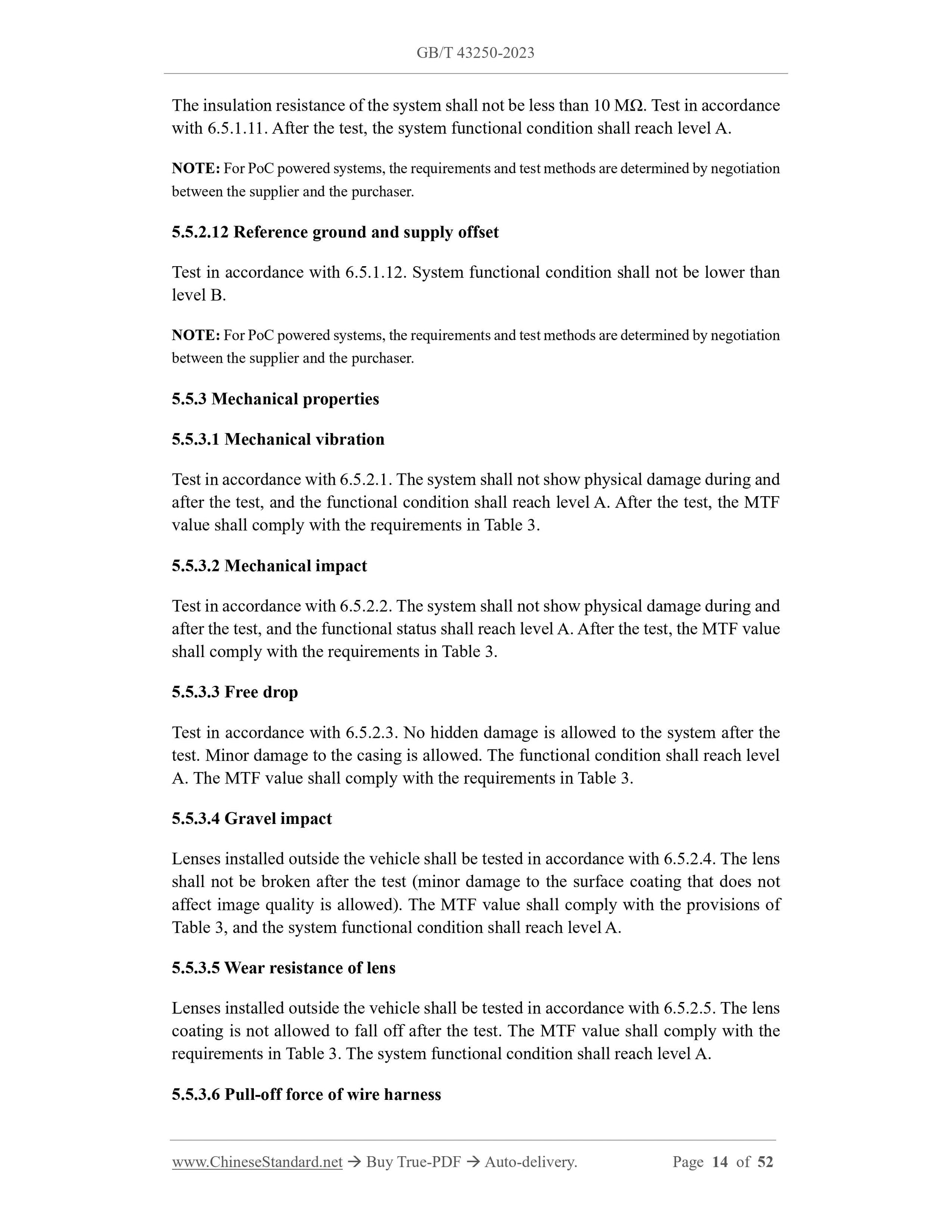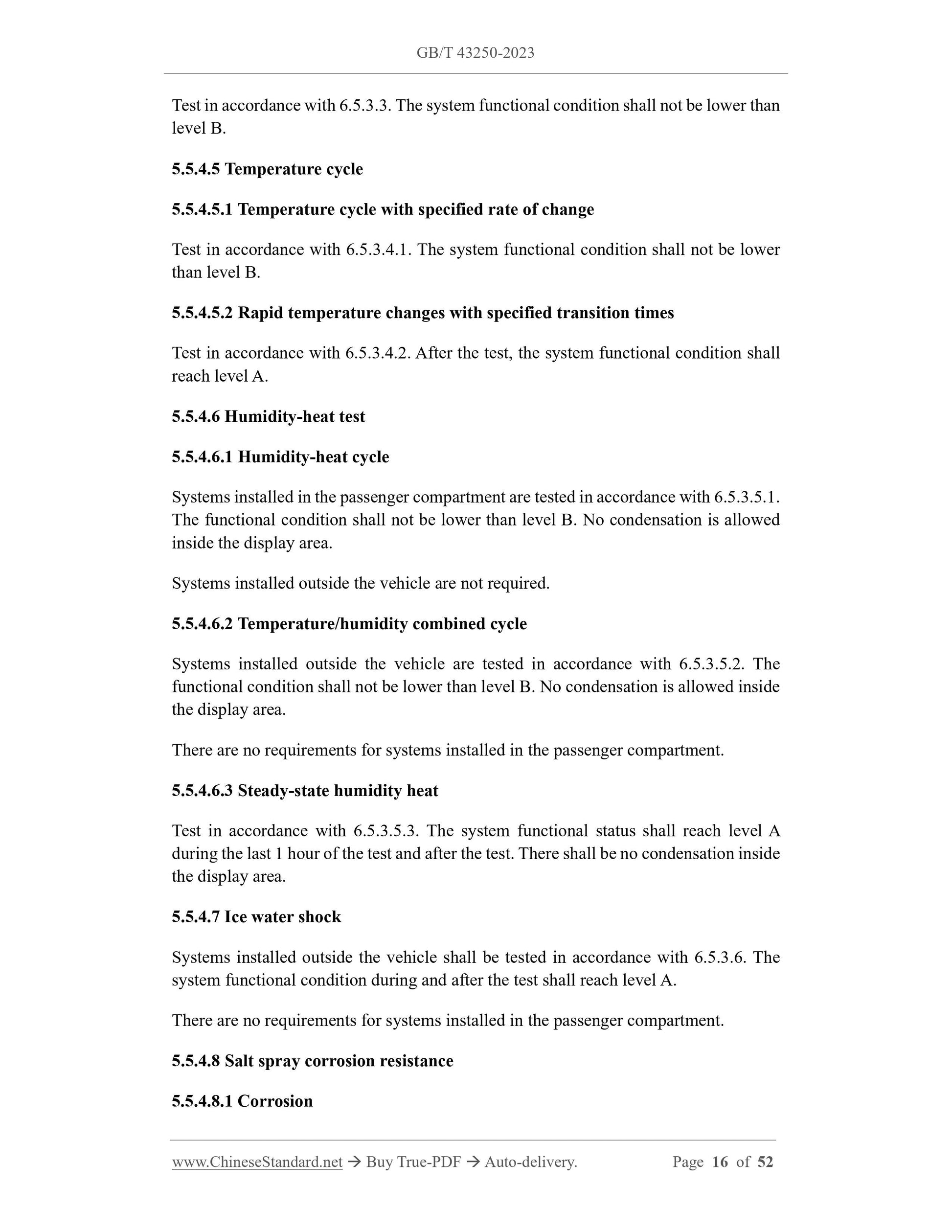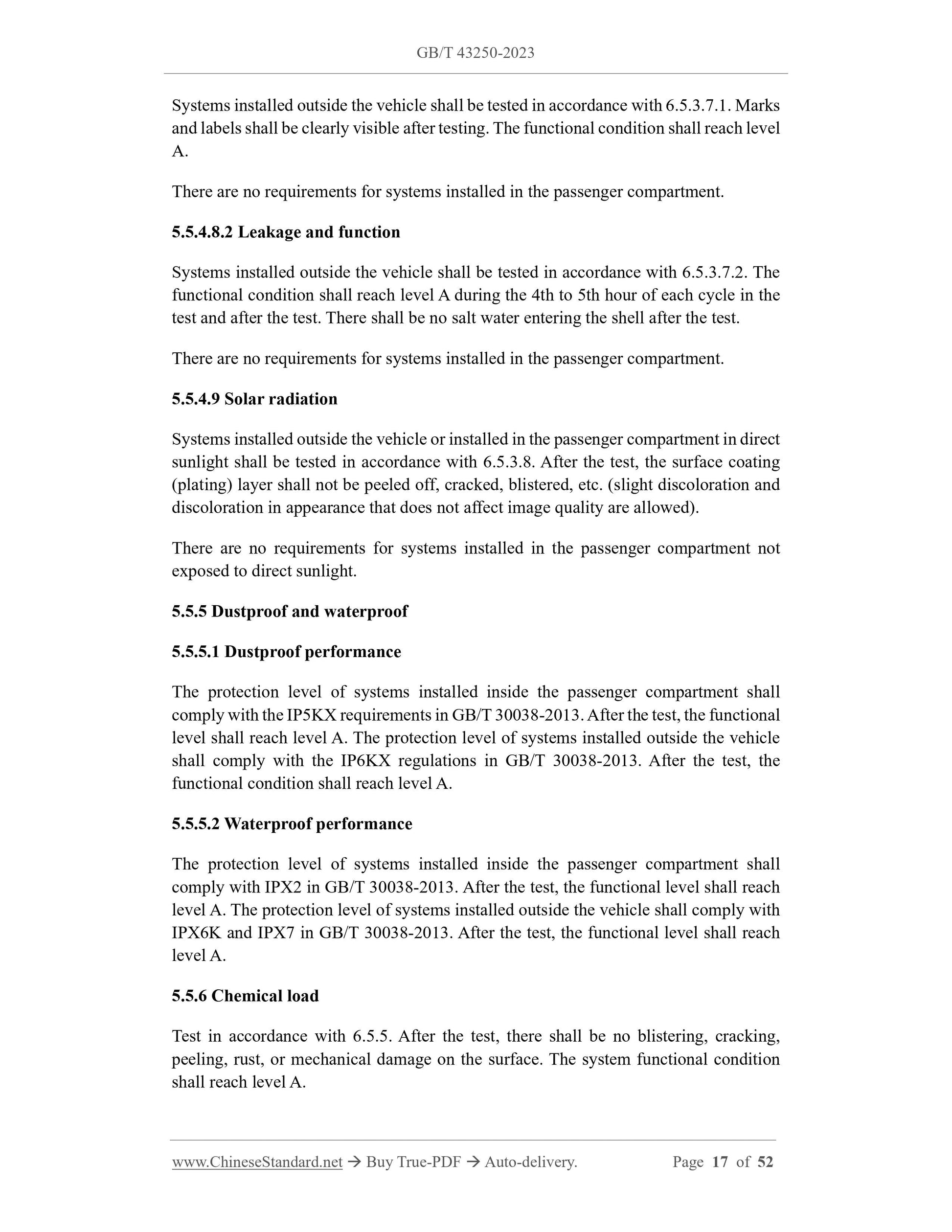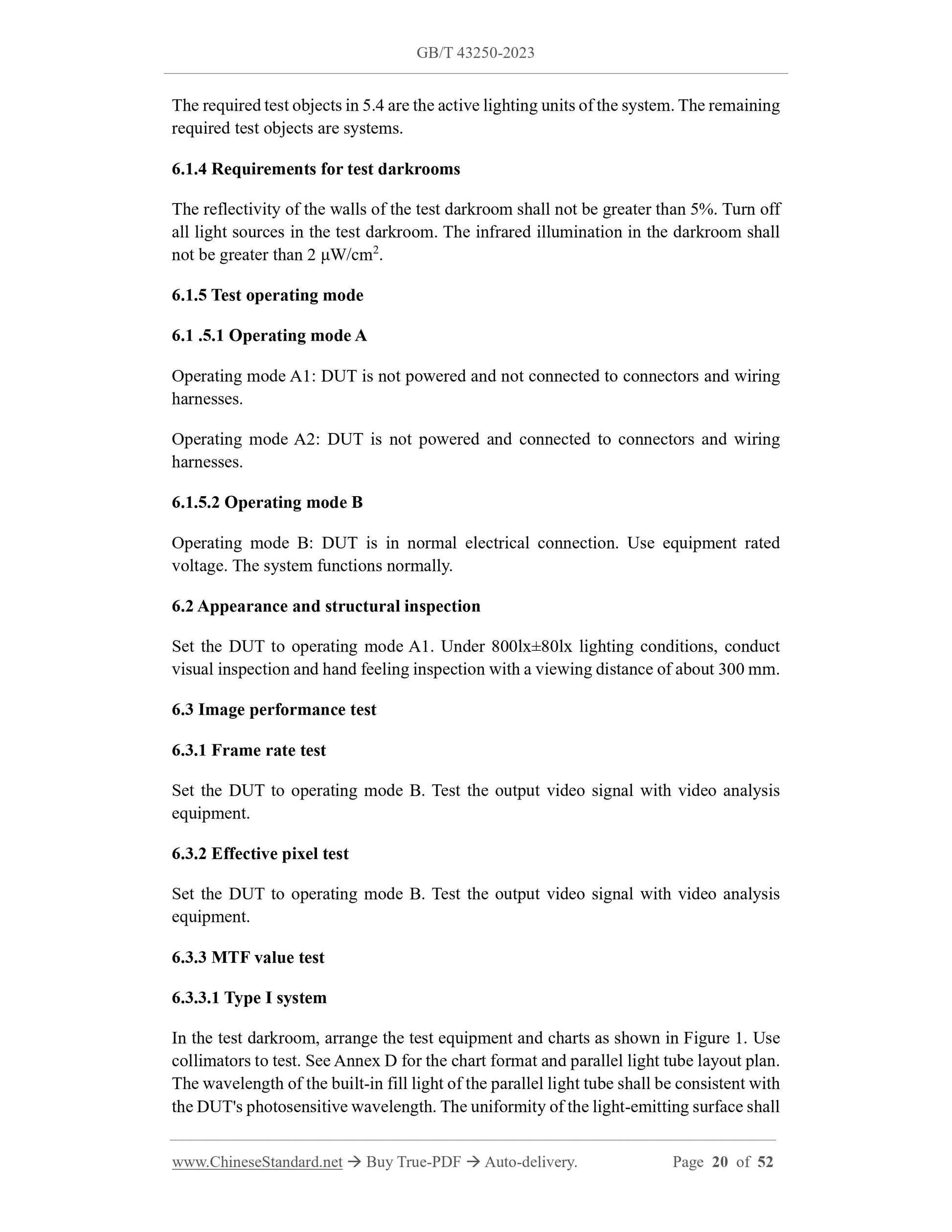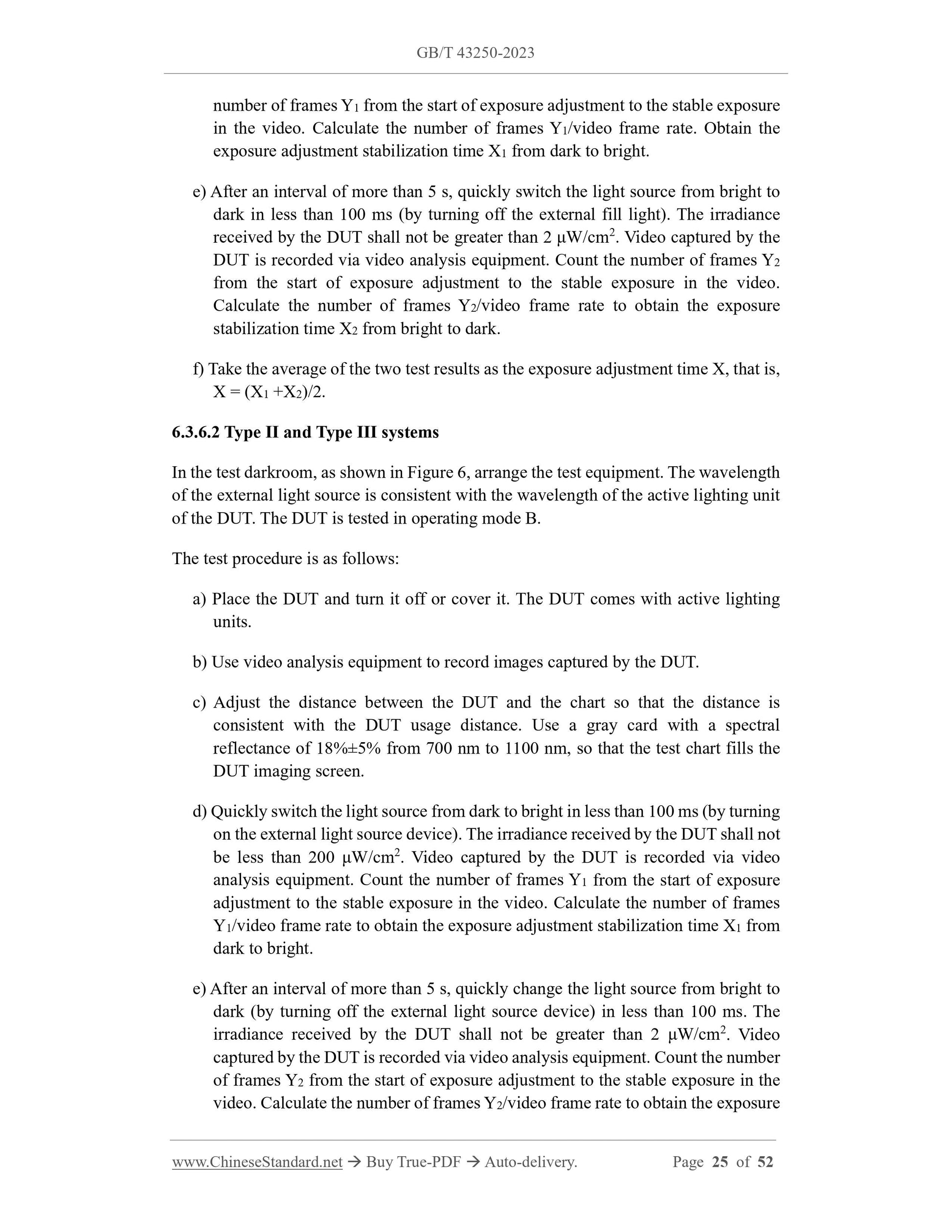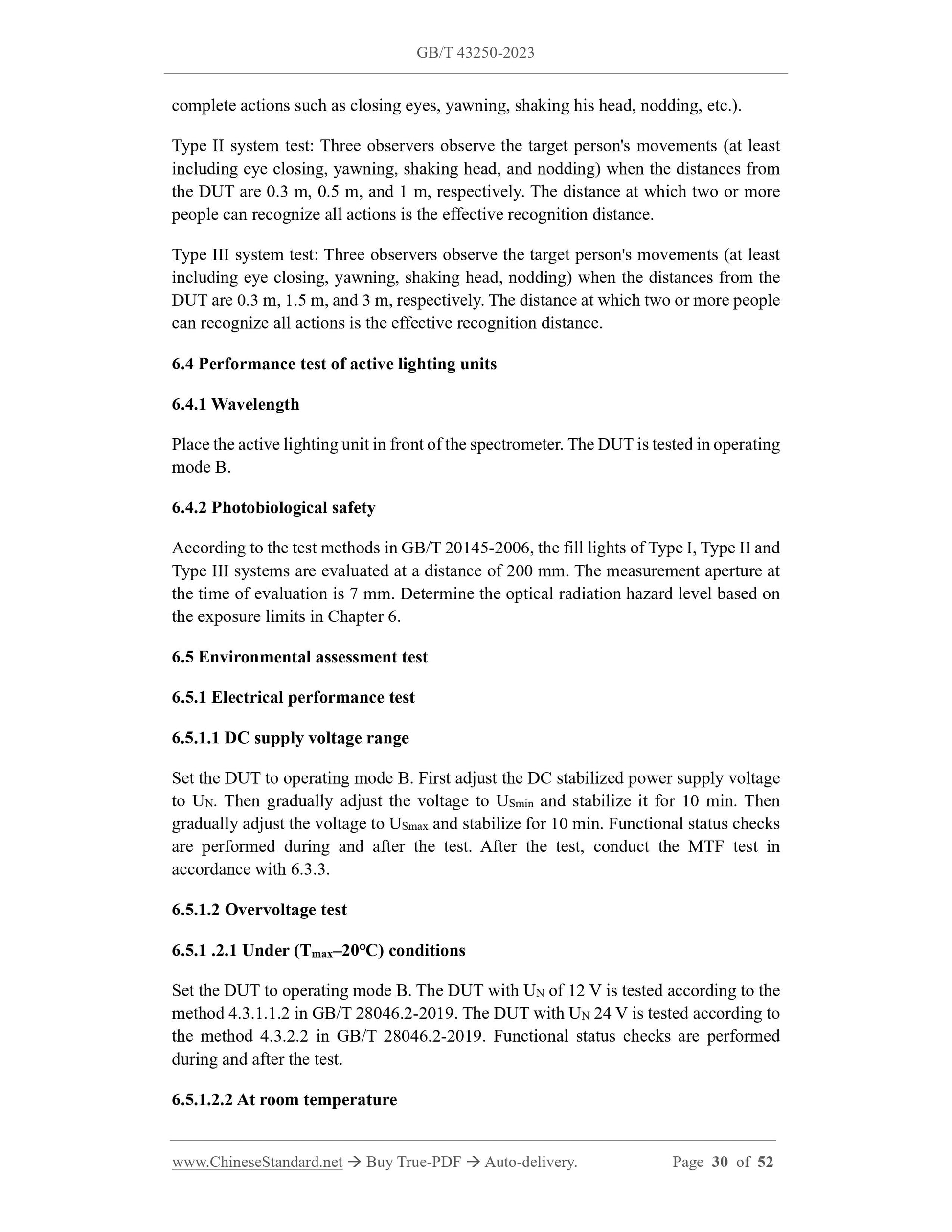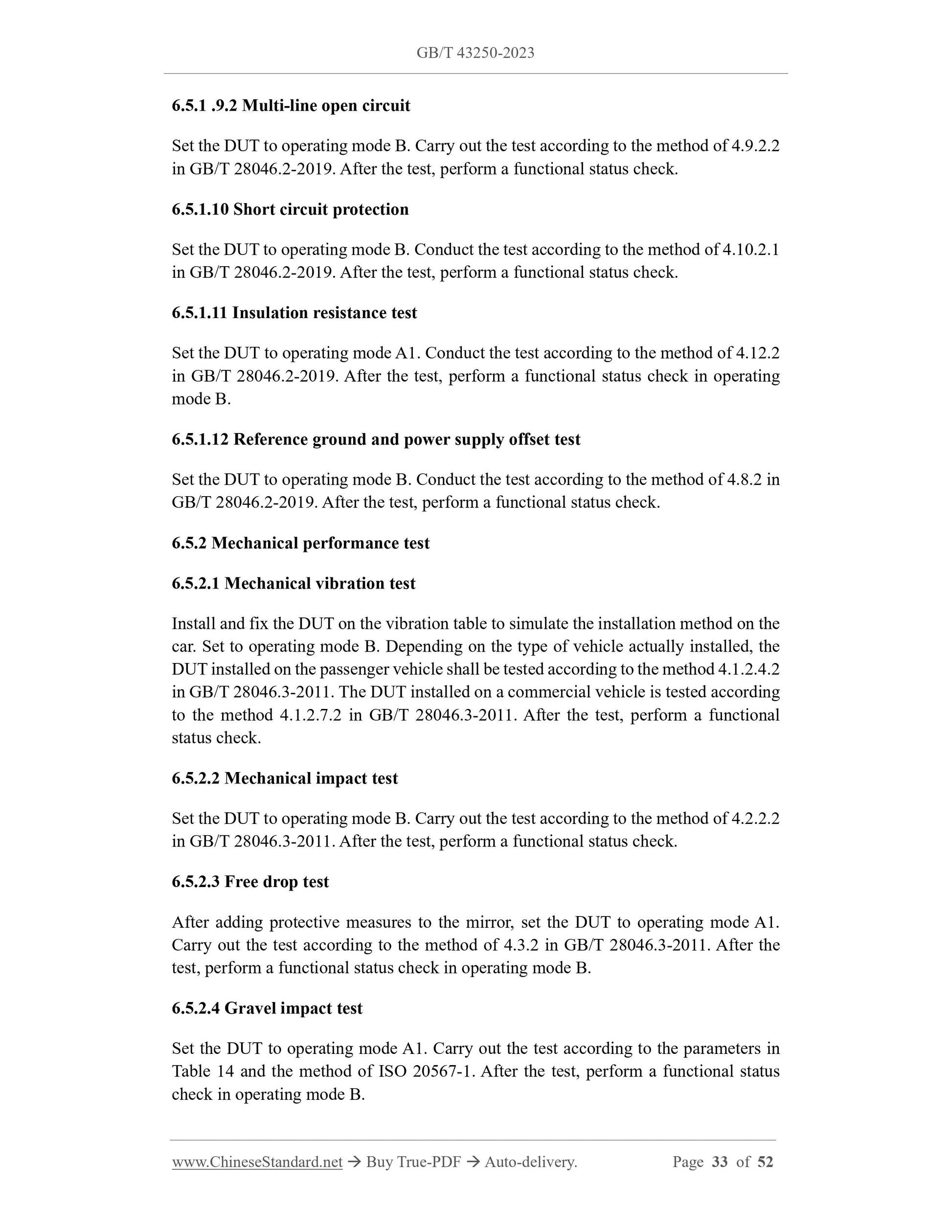1
/
of
12
www.ChineseStandard.us -- Field Test Asia Pte. Ltd.
GB/T 43250-2023 English PDF (GB/T43250-2023)
GB/T 43250-2023 English PDF (GB/T43250-2023)
Regular price
$560.00
Regular price
Sale price
$560.00
Unit price
/
per
Shipping calculated at checkout.
Couldn't load pickup availability
GB/T 43250-2023: Automotive active infrared detection system
Delivery: 9 seconds. Download (and Email) true-PDF + Invoice.Get Quotation: Click GB/T 43250-2023 (Self-service in 1-minute)
Newer / historical versions: GB/T 43250-2023
Preview True-PDF
Scope
This document specifies the requirements, test methods and inspection rules forautomotive active infrared detection system.
This document applies to active infrared detection systems (hereinafter referred to as
systems) used in Class M and Class N vehicles. Systems used by other types of vehicles
shall be implemented with reference to this document.
Basic Data
| Standard ID | GB/T 43250-2023 (GB/T43250-2023) |
| Description (Translated English) | Automotive active infrared detection system |
| Sector / Industry | National Standard (Recommended) |
| Classification of Chinese Standard | T36 |
| Classification of International Standard | 43.040.10 |
| Word Count Estimation | 39,376 |
| Date of Issue | 2023-11-27 |
| Date of Implementation | 2023-11-27 |
| Issuing agency(ies) | State Administration for Market Regulation, China National Standardization Administration |
Share
